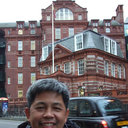Antioxidant Activity and Cytotoxic Effect of Ventilago denticulata Willd Leaves Extracts.
Raktažodžiai
Santrauka
BACKGROUND
Oxidative stress is characterized by an imbalance between the antioxidant defense systems and the formation of reactive oxygen species (ROS). The excess of ROS can damage biomolecules and leading to several chronic conditions and diseases such as diabetes, antherosclerosis, ischemic injury, inflammation and carcinogenesis. Plant extracts and their constituents as a natural source of antioxidants have been extensively studied.
OBJECTIVE
The study aimed to investigate the antioxidant and cytotoxicity of aqueous and ethanolic Rhang Dang (entilago denticulata Willd) leaves extract.
METHODS
The aqueous and ethanolic extracts of Rhang Dang leaves were preliminary analyzed for their phenolic profile (total phenolics and total flavonoids). These extracts were evaluated for their antioxidant properties by different methods such as DPPH radical scavenging andperoxyl radical scavenging activity generated by AAPH (2,2'-Azobis (2-methylpropionamidine) dihydrochloride). Their cytotoxic effects on hepatocellular carcinoma cell line (HepG2) and peripheral blood mononuclear cells (PBMC) were determined by MTT assay. Anti-hemolytic activity was examined using spectrophotometrical method.
RESULTS
The ethanolic extract from Rhang Dang leaves exhibited a strong antioxidant activity and prevented hemolysis. It showed the highest amount of phenolics (91.03 ± 12.43 mg of gallic acid equivalents/g extract) and flavonoid compound (69.76 ± 10.84 mg of catechin equivalents/g). Interestingly, this extract was more cytotoxic to HepG2 cells than PBMC.
CONCLUSIONS
The ethanolic extract from Rhang Dang leaves had strong antioxidant activity and cytotoxic effect on cancer cells.


